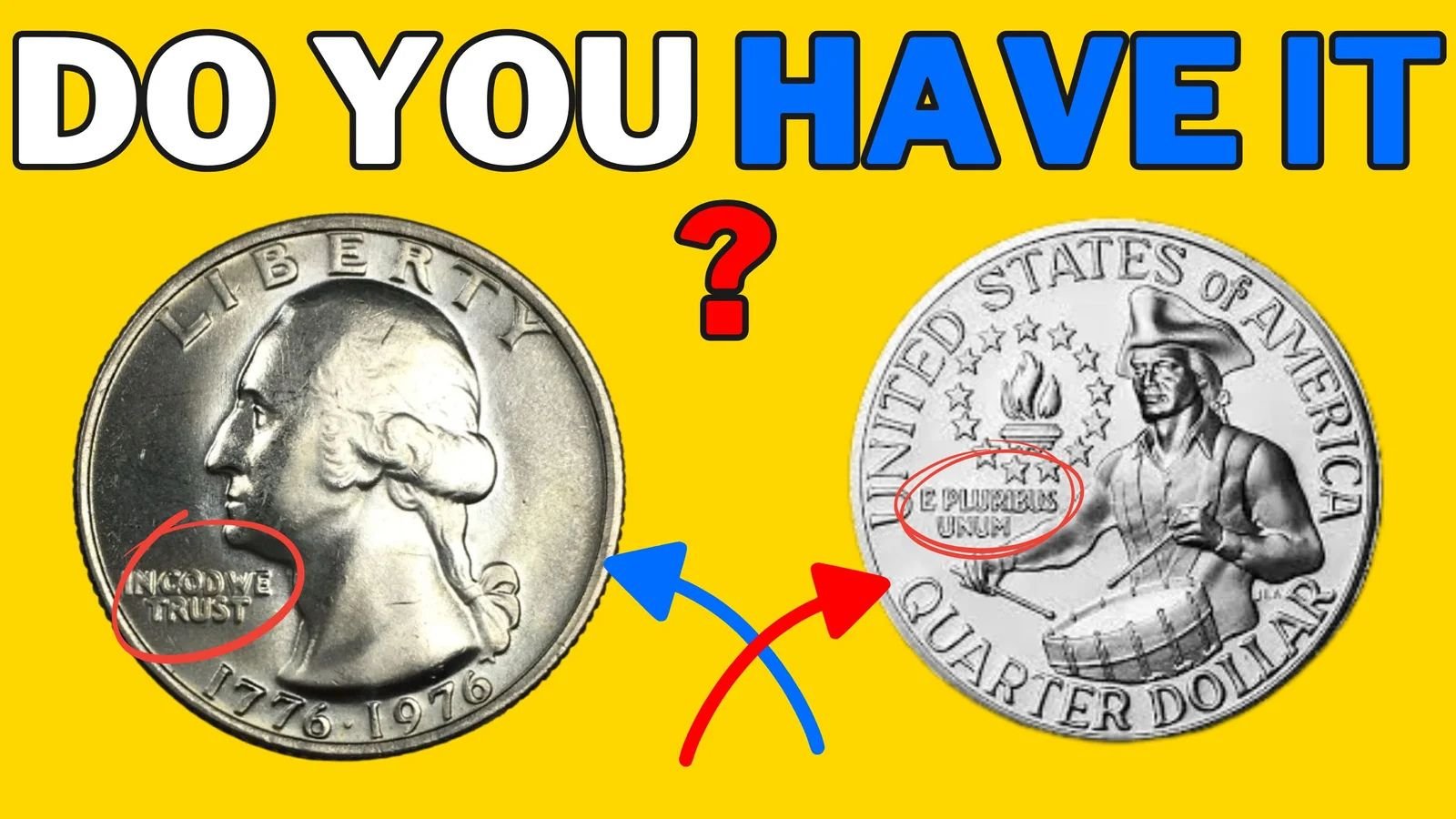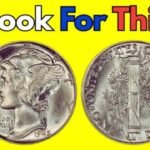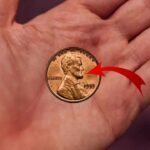In the fascinating world of numismatics—better known as coin collecting—most people dream of stumbling upon a rare gem in their everyday change. For most, it’s just that: a dream. But every so often, an ordinary-looking coin defies expectations and becomes the talk of collectors and investors across the globe. One coin doing exactly that right now is the Bicentennial Quarter, a commemorative 25-cent piece minted to celebrate America’s 200th year of independence. And while millions of these coins were produced, one particular Bicentennial Quarter has sent shockwaves through the collecting world—reportedly valued at an eye-popping $13 million.
That’s not a typo. A quarter—worth just twenty-five cents—might be sitting in someone’s coin jar right now, silently holding life-changing value. Here’s everything you need to know about the Bicentennial Quarter, how to spot a rare one, and why it has collectors scrambling through their spare change.
What Exactly Is a Bicentennial Quarter?
The Bicentennial Quarter was issued as part of America’s celebration of its 200th birthday, or bicentennial, in 1976. To commemorate this milestone, the U.S. Mint temporarily altered the designs of three circulating coins: the quarter, the half-dollar, and the dollar coin.
The Bicentennial Quarter stands out immediately thanks to its reverse side design. Instead of the familiar bald eagle, it features a colonial-era drummer boy, standing next to a victory torch encircled by 13 stars—a nod to the original 13 colonies. The obverse (front) of the coin is also unique. Instead of showing just the year it was minted, it bears a dual date: “1776–1976.”
The coin was minted in both Philadelphia, Denver, and San Francisco, and versions were produced for both circulation and for collectors (proof and silver-clad sets). Tens of millions were made, and many remain in circulation today, making the Bicentennial Quarter a common coin at face value.
But not all Bicentennial Quarters are created equal.
What Makes One Bicentennial Quarter Worth $13 Million?
Now here’s the million-dollar—or rather, 13-million-dollar—question: Why would anyone pay such a massive amount for a 25-cent piece?
The key lies in the rarity and uniqueness of the coin. According to numismatic experts, the ultra-valuable Bicentennial Quarter that has made headlines likely has a specific combination of rare features and minting anomalies that make it truly one-of-a-kind. Let’s break those down:
1. Minting Error or Planchet Mistake
Sometimes during production, a coin is accidentally struck on a planchet (the blank disk of metal that becomes a coin) meant for another denomination. If a Bicentennial Quarter was struck on, say, a silver dollar planchet or with a unique metal composition, that would immediately make it a rare anomaly. These types of errors are incredibly scarce and highly coveted.
2. Double Die or Off-Center Strike
In the chaos of mass production, dies used to stamp coins can sometimes shift or misalign. A double die error means parts of the design—like the date or lettering—appear twice in a slightly offset position. An off-center strike can result in part of the design being pushed toward the coin’s edge. These types of minting flaws dramatically increase a coin’s value, especially if combined with other rare attributes.
3. MS-67 or Higher Grade
The coin’s condition also plays a major role. The rare Bicentennial Quarter that allegedly sold or was valued at $13 million was graded MS-67 or higher, meaning Mint State with almost zero imperfections. Only a tiny percentage of coins minted are preserved in this kind of condition, especially after decades of handling and circulation.
4. Prototype or Experimental Origin
Some quarters are believed to have originated from test strikes or experimental mint runs before mass production began. These prototype coins are not meant for public release and are incredibly rare. A Bicentennial Quarter from such a batch would carry exceptional historical and collectible significance.
5. Metal Composition
While most Bicentennial Quarters were struck in copper-nickel clad, some rare versions were minted using 40% silver, especially in collector sets. But if a coin surfaced with an unusual or mismatched composition, like a wrong-metal error, it could command astronomical value.
In combination, these factors can make a simple Bicentennial Quarter worth millions, if not priceless in the eyes of collectors.
How Can You Tell If You Have a Rare Bicentennial Quarter?
You don’t need a magnifying glass or a PhD to do a basic inspection of your pocket change. Here’s how to begin your treasure hunt:
✅ Check the Dates
A true Bicentennial Quarter should read “1776–1976” on the obverse. If your coin says anything else, it’s just a regular quarter.
✅ Look at the Reverse Design
The design should feature the iconic drummer boy and the torch surrounded by 13 stars. This is the key hallmark of the commemorative quarter.
✅ Inspect for Errors
Look closely at the lettering, date, and edges. Do the letters appear doubled? Is the design off-center? Is the rim thicker on one side? Any irregularities could indicate a mint error.
✅ Weigh the Coin
Standard Bicentennial Quarters weigh approximately 5.67 grams. If yours weighs significantly more or less, it could have been struck on a different metal planchet.
✅ Condition Is King
Even if your coin isn’t an error piece, an uncirculated or proof-quality Bicentennial Quarter can be valuable. Check for signs of wear, scratches, or toning. A coin in mint state (MS) is always worth more.
✅ Get It Professionally Graded
If you suspect your Bicentennial Quarter might be rare, don’t guess. Submit it to a reputable grading service like PCGS or NGC. A certified grade not only confirms its authenticity but also boosts resale value.
Why the Bicentennial Quarter Still Matters Today
For a coin that most people think is just another shiny quarter, the Bicentennial Quarter has proven to be one of the most intriguing pieces in American numismatics. Here’s why it continues to matter:
- Historical Significance: It symbolizes a pivotal moment in U.S. history—the 200th birthday of a nation. The design was patriotic, bold, and distinct.
- Cultural Impact: It’s one of the few circulating U.S. coins with a completely different design on the reverse, making it instantly recognizable even today.
- Hidden Rarity: With so many in circulation, most people assume they’re common and overlook them. But rare varieties are hidden among them like needles in a haystack.
- Revival of Coin Collecting: The story of a $13 million Bicentennial Quarter has sparked renewed interest among the younger generation. Coin collecting is no longer just a grandpa’s hobby—thanks to stories like this, it’s being rediscovered.
FAQs: Everything You’re Wondering About the Bicentennial Quarter
Q1: What is a Bicentennial Quarter?
A Bicentennial Quarter is a U.S. 25-cent coin issued in 1975–1976 to honor America’s 200th birthday. It features a colonial drummer boy and bears the date “1776–1976.”
Q2: Are all Bicentennial Quarters valuable?
Not necessarily. Most are worth only their face value. However, rare varieties—such as those with mint errors, struck on the wrong metal, or in pristine condition—can be worth hundreds, thousands, or even millions.
Q3: What makes the $13 million Bicentennial Quarter so special?
This coin likely features a combination of ultra-rare attributes like an error strike, wrong planchet, high-grade condition (MS-67+), and possible prototype origins. Only one or two are known to exist.
Q4: Where should I go if I think I found a rare Bicentennial Quarter?
Start by visiting a local coin shop or contacting a professional numismatist. If the coin looks promising, submit it to grading services like PCGS or NGC for authentication.
Final Thoughts: Don’t Dismiss That Quarter Just Yet
In the age of digital payments, coins often feel like relics of the past. But the tale of the rare Bicentennial Quarter proves that not all pocket change is created equal. Whether you’re a seasoned collector or someone who just happened to check their change after a coffee run, that 25-cent piece could be something far greater.
So, the next time you hear that familiar jingle in your pocket, take a second to look closer. It might just be your lucky day—and you could be holding a slice of history worth millions.
Some Important Link
| Telegram Group | Click Here |
| WhatsApp Group | Click Here |
| Home Page | Click Here |










